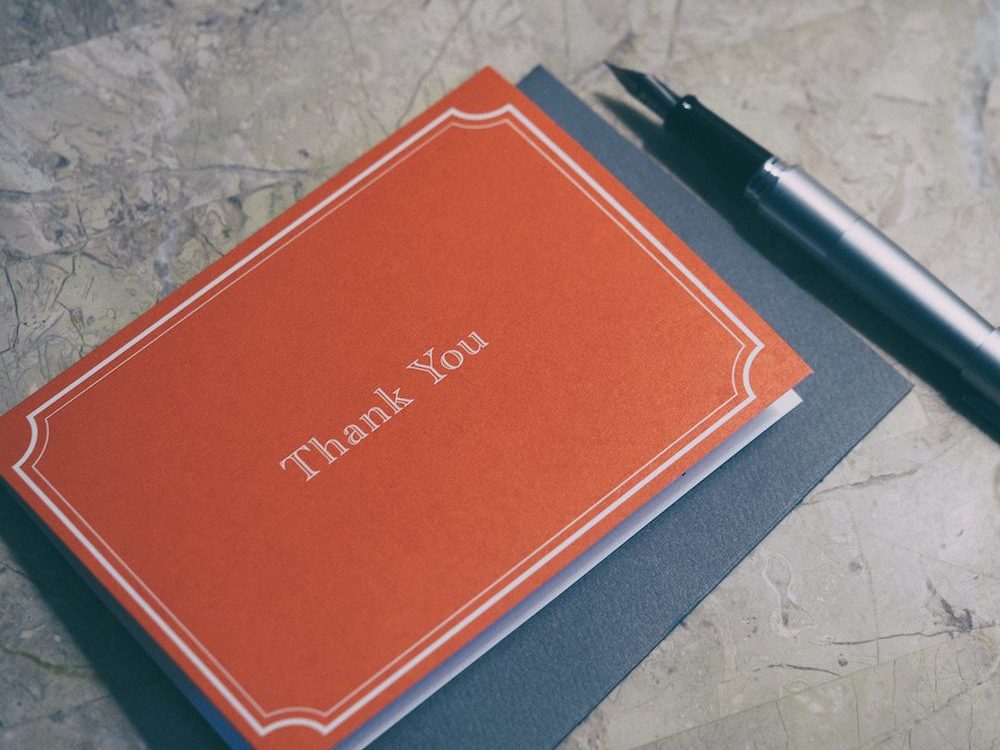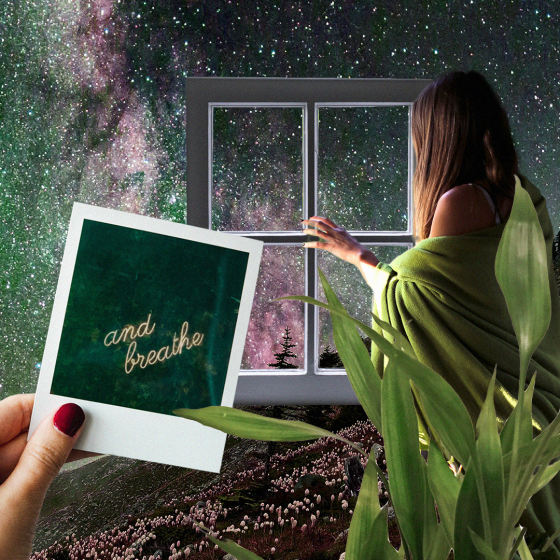Thank you notes; for many a reminder of post-birthday childhood, scribbling reluctant messages to great aunts while desperate to enjoy the proffered gift. A 2018 Snapfish survey seems to confirm that they are a relic of the past for many young people, with their results showing that 81% of millennials don’t expect thank you notes, seeing them as an outdated and unnecessary task. Why then (apart from a generational obsession with stationery) do brands such as Papier and Paperchase still sell blank notes? And why should we be making the effort to sit down and compose notes to mark the kindnesses shown to us by others?
Gratitude isn’t a strange concept. Even for those who have eschewed the traditional thank you note, social media and magazine articles hail the virtues of gratitude journals and morning lists. Writing down what you are grateful for is a key part of many self- care rituals, and women speak frequently about the benefits they gain from seeing in black and white the small and not-so-small things they have to be thankful for.
Some aspects of gratitude journaling, such as noticing the first curl of a dying autumn leaf, the refreshing coolness of that first sip of Diet Coke, or the simple blessing of having two opposable thumbs, are perhaps best kept private. Stored and read back, they provide a chronicle of the things that we take for granted, but are in no way less wonderful for it. However, if you’re journaling your gratitude for the help a colleague gave you with a presentation, the flowers your godmother sent for your birthday, or the friend who cooked you supper after a break up, there is a strong argument for sending that gratitude out into the world, and what better vehicle than a classic thank you note?
An Instagram poll of my friends showed a stark contrast to the Snapfish survey, with 88% of respondents saying that they send handwritten thank you notes. Demographics certainly play a part, with the majority being from rural areas and familial backgrounds that expect certain traditional practices. In general, they responded that they send notes in gratitude for gifts, but also kindness, overnight stays, dinner parties, assistance, invitations, and “gestures that were above and beyond the normal.” Others told me that they preferred to say thank you in person, or that they were careful who they wrote to, as not everyone appreciates the gesture.
My parents never forced me to send thank you notes, and it is largely a habit that I’ve cultivated since my late teens. Raiding Paperchase for pretty blank notecards, and keeping a stack in my university desk, was one of my rituals, and I relished the discipline and habit of sitting down to write a note after a supper party or thoughtful gift. As a member of a generation constantly accused of being selfish and self-obsessed, the act was a small one of rebellion against the stereotype.
The joy of thank you notes is that they have the same internal benefits of a gratitude journal; thinking about an act of kindness or value, writing down the impact it has had on you, and giving thanks for the inclusion of that person in your life. Where they go beyond a private journal is that the receiver also benefits. It’s hard to argue against the thrill of receiving a hand-addressed envelope in the post, and a few lines can be enough to brighten another person’s day.
Research has shown that expressing gratitude has important social consequences, with Chopik et al. writing in the Journal of Positive Psychology “Gratitude aids in the reciprocal generation of close relationships… expressing gratitude is a large contributor to the maintenance of close intimate bonds.” Their paper goes on to say that “gratitude allows individuals to focus on and appreciate the positive aspects of life, even in the context of great loss and difficulty.”
Thank you notes may seem an archaic relic of a bygone era, and redundant given the ease in which thank you’s can be expressed via private online message or publicly on Instagram stories or a Facebook post. However, I think that the intimacy of handwriting cannot be replicated on a screen, and the exhibitionism of public gratitude, often done more to curate the online persona of the poster than to actually thank the other person, lacks the sincerity of a paper note sent through the post.
Debrett’s, in their etiquette guide advise that thank you notes should be sent within ten days of a thoughtful act, should always be handwritten, and should include details to personalise the letter. The latter is the part that I find the most useful; pausing to reflect on which part of a weekend that was most memorable, how someone’s time will impact on your career, or describing what you are looking forward to most about a new book. Here too you can express thoughts that you wouldn’t put out in a social media thank you- that the £20 your aunt sent for Christmas will tide you over until payday.
Thank you notes are easy to write, cheap to send, and kind. In a world that seems to get harsher every day, we need all the kindness that we can get. So find a piece of paper (headed or otherwise) and put a pen to it. We all have someone to say thank you to.









